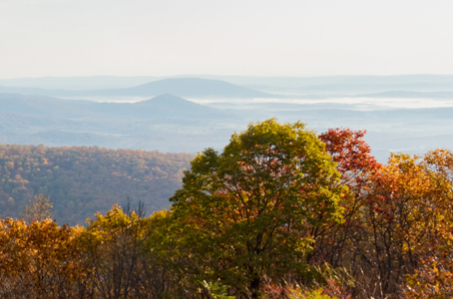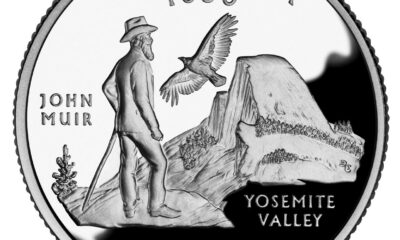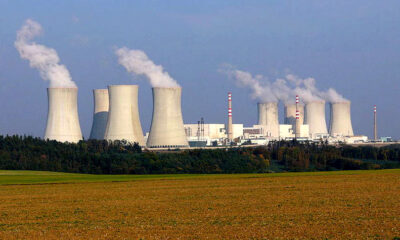Executive
If Appalachia Recovers, Small Entrepreneurs Will Drive the Revival
Appalachia can no longer attract big factories, but small businesses can thrive without subsidized boondoggles that pass for competition.

Bootstrapping economic growth has a certain appeal. It’s decentralized with many actors pursuing their own ends – plant 1,000 seeds and let the flowers bloom, then harvest what found the light.
Appalachia doesn’t need the big projects
For rural regions like Appalachia, where local politicians may strive for big manufacturing projects but keep losing them to the Sun Belt, the one avenue left for growth may be among small businesses.
Luckily, the loss of big projects is a blessing.
After decades of economic decline, subsidy-laden factory schemes did little to bring back rural Pennsylvania or Ohio. If state leaders instead embrace an ethos of making rural parts friendly to small businesses – support them, don’t stymie them – then counties left for dead could turn themselves around.
One strategy has been to focus on outdoor recreation. Northwest Pennsylvania has seen some success, attracting visitors as it diversifies the economy and cleans up the land. Though outdoor recreation isn’t a cure-all, it has the advantage of using existing assets without burning through a mountain of money.
“Recreation economies require little in terms of investments,” James Maples of Eastern Kentucky University and Michael Bradley of Arkansas Tech University argued in an analysis of rock climbing in Kentucky. “Attracting, for example, a manufacturer or corporation often entails bartering tax credits to entice them to relocate. Outdoor recreation is quite different. Simply making areas available for use (such as climbing, hiking, and mountain biking) can create opportunities for outdoor recreation expenditures to occur.”
Not every trail offers equal benefits, though.
The smart way to build outdoor recreation
The trick for local and state leaders will be to figure out when a community should choose a bike trail over an ATV trail, or lean on hunting and fishing rather than hiking and skiing. Taking a calculated risk could bring wealth – but building on nothing but hope is a fool’s errand.
Appalachia must be smarter about developing outdoor recreation because the region has fewer opportunities, making each wasted effort costlier. A 2010 analysis estimated that Central and Southern Appalachia, on a per-capita basis, has one-third less land available for outdoor recreation because so much is privately owned.
That lack of public land doesn’t mean everything is off-limits. Public-private partnerships can work – West Virginia’s Hatfield-McCoy ATV trail system spans more than 1 million acres of private land – but that requires complex organization.
For some more-remote or more-distressed areas, the economic benefits of outdoor recreation will be more muted.
In the former coal communities of southwestern Virginia, for example, outdoor recreation provides some bright spots, like the 30-mile Back of the Dragon motorcycle route from Tazewell to Marion. Being so far from bigger cities, though, means the ceiling for success is lower.
Businesses springing up along routes and trails
“That has inspired entrepreneurship on a local level in the towns that are surrounding it,” said Amanda Killen, new economy program coordinator for Appalachian Voices. “Before we started developing that as an outdoor recreation or opportunity, we didn’t have any restaurants. But this influx of people started coming in from all over the world to go across the Back of the Dragon, and suddenly we have restaurants and we have shops.”
Those businesses, though, might be it.
“It has been effective. The thing that it’s not effective in is establishing long-term and high-paying jobs,” Killen said. “Sustainable income – it doesn’t exist here, and we’ve been heavily impacted by the decline of coal, and there’s not anything that’s replacing those high-paying coal jobs. But, it’s better than nothing.”
The biggest employer in Tazewell County is the government, followed by retail and health care. More people work for the local government than in manufacturing, mining, oil, and gas combined.
“Economic diversification means different things to different people,” Killen said. “But ultimately what many of us have realized is that no one’s coming to save us. Amazon’s not gonna come here, a factory’s not gonna come here and build because we don’t have the workforce … What else can we do? Other than capitalize on our natural resources that we have here.”
“We don’t play nice together” in Appalachia
Local rivalries can mean that the capacity of county governments to develop assets is limited, too.
“We don’t play nice together,” Killen said. “Everybody’s fighting for their own identity and trying to promote what makes them special and unique.”
Even regional promotions, like Friends of Southwest Virginia, Killen said, aren’t always enough to overcome parochialism. An overarching strategy and plan exists, but proactive town managers still strive to set themselves apart.
“We have a scarcity mentality in Appalachia as a whole and I think we earned it through all these generations of struggle and strife,” she said. “That comes out in these – not really rivalries, but people not really working together to lift everyone.”
Despite the hurdles – political, economic, egotistic – people try.
In West Virginia, Brandon Dennison found his way back to the Huntington area after a stint in the Midwest and started Coalfield Development in 2010, a social enterprise outfit to provide job training and incubate entrepreneurial ideas.
“It’s not good to be a mono-economy, it’s not healthy to put all your eggs in one basket,” he said. “The idea was we would use these enterprises to put people back to work.”
Since launching, Coalfield Development has supported and grown more than 70 businesses, trained 2,000 workers, and brought in $100 million in investment for southern West Virginia, Dennison noted.
The paid job is the secret
The organization operates on a 33/6/3 model: 33 hours of paid work, 6 hours of higher education, and 3 hours of personal development.
“We always knew we wanted a workforce model, it needed to be a paid job,” Dennison said. “People couldn’t put their lives on hold to go get training – and also the dignity that comes with meaningful employment we thought was important.”
That model focuses on “the human element” because, he said, it’s also the biggest barrier to success. From addiction to debt loads “that would blow your mind” to problems with transportation and childcare – community and social issues hold back development as much as a lack of job skills.
State and federal programs often ignore those problems in favor of centralization and formulaic spending.
“It’s really important to have local community-based partners who have local relationships to implement these programs and I think there needs to be a lot more flexibility allowed to how those local groups implement it,” Dennison said. “And I think funders don’t want to hear that. They’d rather make one big block grant … and be done with it. But we gotta go deeper.”
Another example
Community passion also helps. In the Pennsylvania Wilds region, the Elk County Riders are an ATV group looking to build a multi-county trail system that could carry some economic benefits that improves the quality of life.
The Elk County Riders holds fundraisers and applies for grants to build a “Trail of Dreams” on private land, connected via municipal roads when necessary. They’ve received state funding for feasibility studies and bridge-building, created decades-long rights-of-way agreements, and partnered with private companies to build it out.
Fundraisers, ECR Treasurer/Director Cheryl Ruffner said, can bring in almost $30,000 per event and shows that they have skin in the game, rather than relying on public money. She’s also trying to be realistic about the trails’ economic impact.
“It does bring economy,” Ruffner said. “I’m not talking $200 million. But if you could bring $1 million or $2 million a year up here, get people outside enjoying the outdoors … we never went into this assuming we were going to be a cure-all … but this is one more component with the biking trails and hiking trails.”
“It sure does bring life into the community,” Ruffner said. “One is to help with revenue and economy, but the other side of things is getting people outside to appreciate what was God-given and not man-made.”
Possible hindrances
That approach, working within existing constraints and forging partnerships, has made some progress that’s more in line with the area’s resources. The nearby Allegheny National Forest approves of ATVs and has 100 miles of open trails for them. With a “Trail of Dreams,” this corner of Pennsylvania may develop as an ATV hub.
“A lot of things are overblown, there’s a lot of over-promising,” said Sam MacDonald, president of the Elk County Catholic School System and a former Ridgway borough councilman in Elk County. “I’m very hopeful about it because at least so far, what we’ve been able to build has not been at the expense of what’s already here.”
Building depends on local entrepreneurs, be they economic, educational, or civic ones. Volunteer efforts around Pennsylvania towns like Ridgway, Kane, and St. Marys can be as small as hanging banners of hometown veterans on lamp posts, but they make community bonds more resilient. Losing one or two leaders isn’t as catastrophic if dozens are helping out.
The efforts are liable to fade, however. Ruffner, now in her 60s, recalled similar efforts in the 1980s to spruce up the towns which petered out along with the funding. Others died when a volunteer moved away and no one stepped up.
There’s an aversion, too, to county and regional collaboration. Elk County’s total population is only 30,000 people, but the focus tends to be on the borough, not the area writ large.
Appalachia getting help
“One thing that hinders Elk County is the fact that we think in silos – every one of our communities is a silo,” Ruffner said.
Despite the risk of fadeout without longer-lasting institutions, these entrepreneurial efforts may be coming at just the right time: state government is taking outdoor recreation more seriously as an economic driver.
In Pennsylvania, the Office of Outdoor Recreation’s “first priority,” Director Nathan Reigner said, is to build capacity in the industry and organize it. Officials view it as one that’s grown wild with little coordination among stakeholders, and this tumultuous approach is holding it back.
That seems to be true. The Bureau of Labor Statistics notes that Pennsylvania’s outdoor recreation value added as part of its GDP is 1.6%, below the 1.9% national average. Other parts of Appalachia could benefit from similar coordination – assuming state officials don’t take it as permission to gamble with taxpayer money or fund anything that’s vaguely related to the outdoor economy.
Pennsylvania’s chance to tap into population centers is better than places like Tazewell County, Virginia.
Elk County is about 2 hours from Buffalo and State College, 3 from Pittsburgh and Cleveland, and 4 from Columbus and Toronto. Though many of those cities have declined in the last half-century, a 4-hour drive for vacation isn’t outrageous.
A broader lesson
Efforts to create an outdoor recreation boom in Appalachia have broader lessons. Diversifying the economy matters – the days of relying on one factory to drive tax revenue, population growth, and prosperity are over. The sector also shows that growing the economy can also improve amenities or the quality of life beyond a county’s finances, which breeds local pride and loyalty.
It also shows the importance of building up small wins. Instead of hoping for utter revolution in the span of a presidential administration, some localities are thinking of generational timelines. Cobbling together a river clean-up here, a bike trail there, and park improvements throughout the area create opportunities for entrepreneurs to seize.
Few business owners and local officials sell outdoor rec as the answer to all the region’s problems – they’re realistic about its limitations. But the key to many of the successes in the region has been bottom-up changes. County and state funds have followed local efforts to do something new. Technocrats in far-off capitals are not throwing money at a problem and taking credit for new solutions.
If Appalachia restores its vibrancy, population, and economy, it’ll be the result of many years’ effort. And if that day comes, the model for recovery will mirror what’s so far been accomplished in outdoor recreation.
This article was originally published by RealClearPennsylvania and made available via RealClearWire.
Anthony Hennen is a reporter for The Center Square in Pennsylvania and managing editor of expatalachians, a journalism project focused on the Appalachian region. He is also a 2023–24 Robert Novak Journalism Fellow.
-

 Executive2 days ago
Executive2 days agoWaste of the Day: Can You Hear Me Now? No.
-

 Civilization2 days ago
Civilization2 days agoTrump’s version of the Monroe Doctrine
-

 Civilization4 days ago
Civilization4 days agoOne Fell Swoop: Lawsuit Eyes Death Blow to Racial Preferences
-

 Civilization3 days ago
Civilization3 days agoTrump’s New Doctrine of Precision Deterrence
-

 Civilization2 days ago
Civilization2 days agoThe Mission to Extradite Nicholas Maduro
-

 Civilization2 days ago
Civilization2 days agoThe Snatch and Grab of Maduro Was Not ‘Illegal’
-

 Executive4 days ago
Executive4 days agoWaste of the Day: $1.6T in Wasteful Spending in Rand Paul’s “Festivus” Report
-

 Civilization15 hours ago
Civilization15 hours agoHow Do You Solve a Problem Like Wikipedia?













